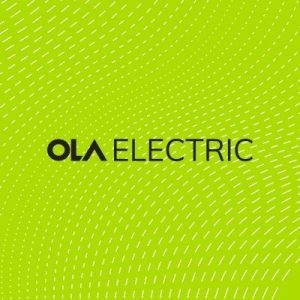Schedule of Ola Electric
| Issue open date | 02 Aug 2024 |
| Issue close date | 06 Aug 2024 |
| UPI mandate deadline | 06 Aug 2024 (5 PM) |
| Allotment finalization | 07 Aug 2024 |
| Refund initiation | 08 Aug 2024 |
| Share credit | 08 Aug 2024 |
| Listing date | 09 Aug 2024 |
| Mandate end date | 21 Aug 2024 |
| Lock-in end date for anchor investors (50%) | 06 Sep 2024 |
| Lock-in end date for anchor investors (remaining) | 06 Nov 2024 |
Note: The schedule is tentative. The anchor lock-in period ends 30 days after the actual allotment date for 50% of the shares and 90 days after for the remaining portion. The allotment status can be checked on the registrar's website and the exchange website.
About Ola Electric
Ola Electric began as a subsidiary of ANI Technologies (Ola Cabs) before becoming an independent entity in 2018. It operates India’s largest two-wheeler EV factory in Tamil Nadu, offering the Ola S1 e-scooter in four variants. The company competes with Heromotocorp, Bajaj Auto, and Ather Energy.
Financials of Ola Electric
IPO Issue size
| Funds Raised in the IPO | Amount |
| Overall | ₹6145.56 crores |
| Fresh Issue | ₹5500 crores |
| Offer for sale | ₹645.56 crores |
Utilisation of proceeds
| Purpose | INR crores (%) |
| Capital expenditure for OLA Cell Technologies | 1227.64 (22.32%) |
| Debt reduction of Ola Electric Technologies | 800 (14.55%) |
| R&D investment | 1600 (29.10%) |
| Organic growth-related expenses | 350 (6.36%) |
| General corporate purposes | 1375 (25%) |
Overview
The company is a pure EV player in India and is building vertically integrated technology and manufacturing capabilities for EVs and EV components, including cells. The company is focusing on capturing the opportunity arising out of the electrification of mobility in India and is also seeking opportunities to export EVs in select international markets in the future. The company manufactures EVs and certain core EV components like battery packs, motors, and vehicle frames at its manufacturing facility known as Ola Futurefactory. This manufacturing facility at Krishnagiri, Tamil Nadu is India’s largest two-wheeler EV manufacturing factory with an installed capacity of one million units per year. It undertakes R&D activities in India, the United Kingdom (UK) and the United States (US).
The company operates a direct-to-customer (D2C) omnichannel distribution network comprising 935 experience centres and 414 service centres (of which 410 service centres are located within experience centres) across India. Its current product portfolio includes an e-scooter named Ola S1 in four variants – Ola S1 Air, Ola S1X, Ola S1, and S1 Pro. According to the Redseer Report:
- Ola had the highest revenue of all Indian incorporated electric 2Ws (E2Ws) original equipment manufacturers (OEMs) from E2W sales in Fiscal 2023.
- Within nine months of delivering its first EV scooter in December 2021, Ola became the best-selling E2W brand in India in terms of monthly E2W registrations on the VAHAN Portal of the Ministry of Road Transport and Highways.
Strengths
- Leadership in the Indian E2W market: The company holds a leading position in the rapidly growing electric two-wheeler (E2W) market, accounting for approximately 31% of E2W registrations in India in the first half of 2023. E2W penetration in India is projected to jump from 4.5% in 2023 to 41-56% by 2028.
- Government incentives: Unique among Indian EV manufacturers, the company benefits from two Government of India PLI schemes—the Automobile PLI Scheme and the Cell PLI Scheme—providing cost advantages through cash incentives for advanced chemistry cells and EV scooters.
- Direct-to-Customer omnichannel model: Their digitally driven Direct-to-Customer (D2C) model offers cost benefits, direct customer engagement, and efficient inventory management, enabling accurate demand forecasting and tailored production schedules.
Risks
- Relying on government incentives: Any reduction or removal of government incentives, such as the Faster Adoption and Manufacturing of Electric Vehicles (FAME) subsidy, benefits from schemes like the Production Linked Incentive (PLI) for the Automobile and Auto Component Industry, including the PLI Scheme for National Programme on Advanced Chemistry Cell Battery Storage, subsidies from the government of Tamil Nadu, and GST concessions for EV customers, could escalate the purchase cost. This scenario might potentially dampen customer demand for the company’s EVs.
- Anticipating supply and demand: The company might struggle to accurately forecast the supply and demand for its electric vehicles, leading to either shortages or excess inventory. This uncertainty could hinder the effective management of manufacturing requirements, resulting in additional costs and production delays. Subdued demand for Ola’s EVs and underutilization of Ola Futurefactory’s capacity may impede the company’s ability to capitalize on economies of scale.
- Intense competition: The company could face challenges in competing effectively in the fiercely competitive and rapidly evolving automotive market. Advancements in alternative technologies for internal combustion engine (ICE) vehicles, such as advanced diesel, hydrogen, ethanol, fuel cells, or compressed natural gas, as well as improvements in fuel economy or other ICE features, could significantly and negatively impact the business and its prospects.
